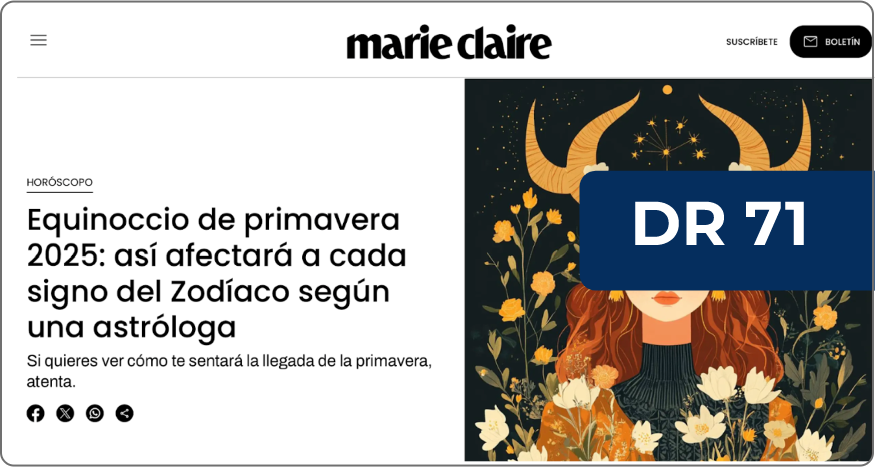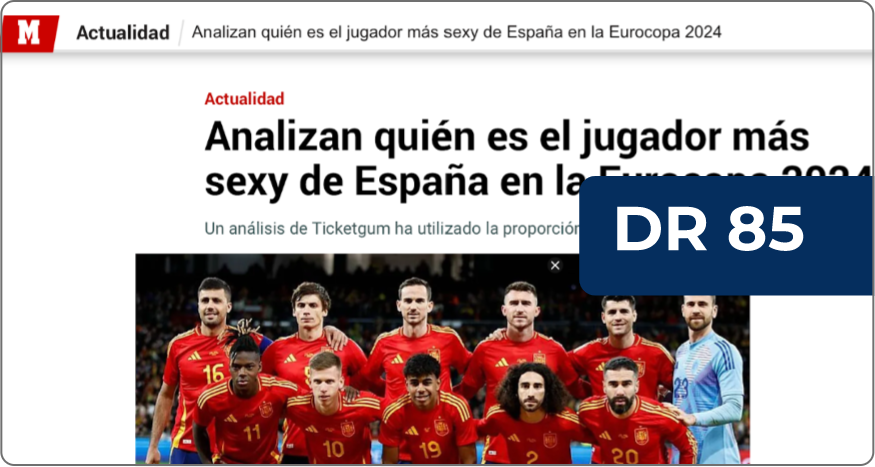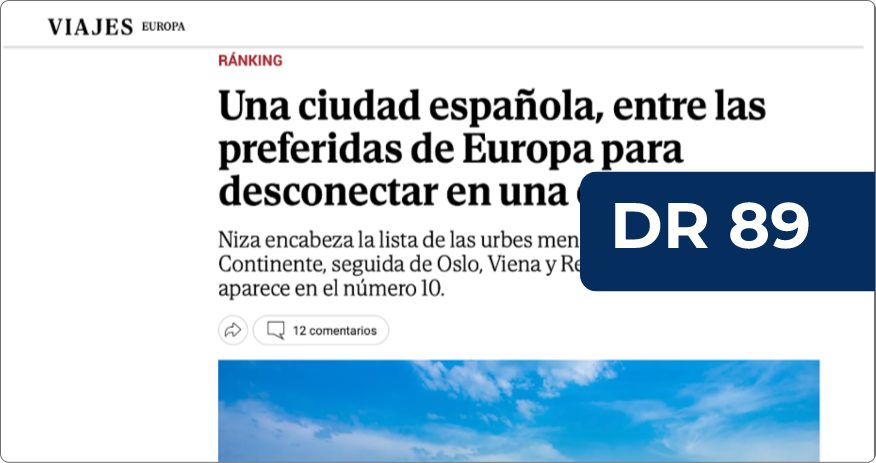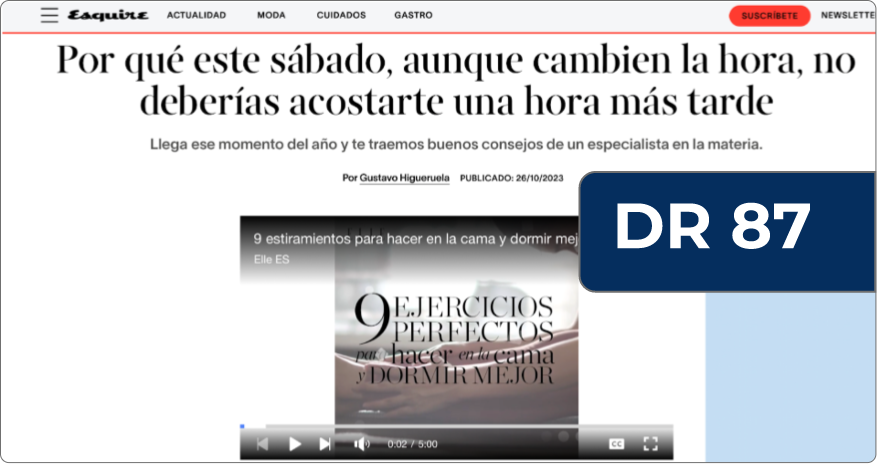- 1. Understanding the Spanish Digital PR landscape
- 2. The Spanish media ecosystem: Where to get the best links
- 3. What works in Spain: PR campaigns that drive links
- 4. Outreach in Spain: What works with Spanish journalists
- 5. Why AI translation fails for Spanish Digital PR
- 6. The secret to Spanish Digital PR: Why you need native expertise
- 7. The SEO & business impact of securing Spanish links
1. Understanding the Spanish Digital PR landscape
Spain has a diverse and evolving media landscape, with a growing interest in data-driven content and Digital PR strategies. Unlike more established markets such as the UK and US, Digital PR in Spain is still developing, making lots of opportunities for a brand, or digital PR agency, to secure high-quality backlinks.
One of the most distinctive aspects of this market is its strong regionalisation. Spanish journalists tend to favour stories that highlight local culture, social trends, or community interests. In addition to national outlets like El País and El Mundo, there are highly influential local publications such as El Periódico (Catalonia), El Correo (Basque Country), La Voz de Galicia (Galicia), and El Ideal (Andalusia).

Therefore, to achieve effective media coverage, campaigns must be tailored to resonate with the values and interests of each region. It is important to highlight that while Spanish is the predominant language, Spain officially recognises six languages, including Catalan, Galician, and Basque. Knowing your audience and personalising outreach with regional linguistic considerations can significantly increase the chances of securing coverage.
When it comes to content preferences, Spanish audiences engage most with topics related to entertainment, sports, lifestyle, food, and culture. In fact, over 60% of our links are sports-related, while one-third focus on lifestyle content. However, it is crucial that any data presented is credible and sourced from authoritative references, as journalists value well-researched content and will only publish information if it provides a unique angle.
Challenges in Spanish Digital PR
There are specific challenges to consider when developing Digital PR strategies in Spain. Many traditional publications still prioritise print over digital formats, which can limit link-building efforts as some outlets either do not include external links or charge for them. Additionally, some journalists may have a limited understanding of SEO, leading to unlinked brand mentions even when coverage is secured. Strict editorial policies in certain media outlets also mean that external links are only included if they are either sponsored or deemed editorially indispensable.
Spanish journalists can also be sceptical of branded content, making it essential to structure campaigns around a newsworthy angle, compelling data, or clear cultural relevance. When this balance is achieved, brands can secure coverage in highly respected, authoritative publications - boosting online visibility, brand awareness, and valuable link acquisition where many competitors struggle.
Take a look at our guide to getting German coverage to compare the challenges across different EU markets.
2. The Spanish media ecosystem: Where to get the best links
Understanding where to target campaigns is critical for gaining high-quality links in Spain. Securing coverage in the right publications can enhance a brand’s credibility, visibility, and SEO performance.
National top-tier publications:
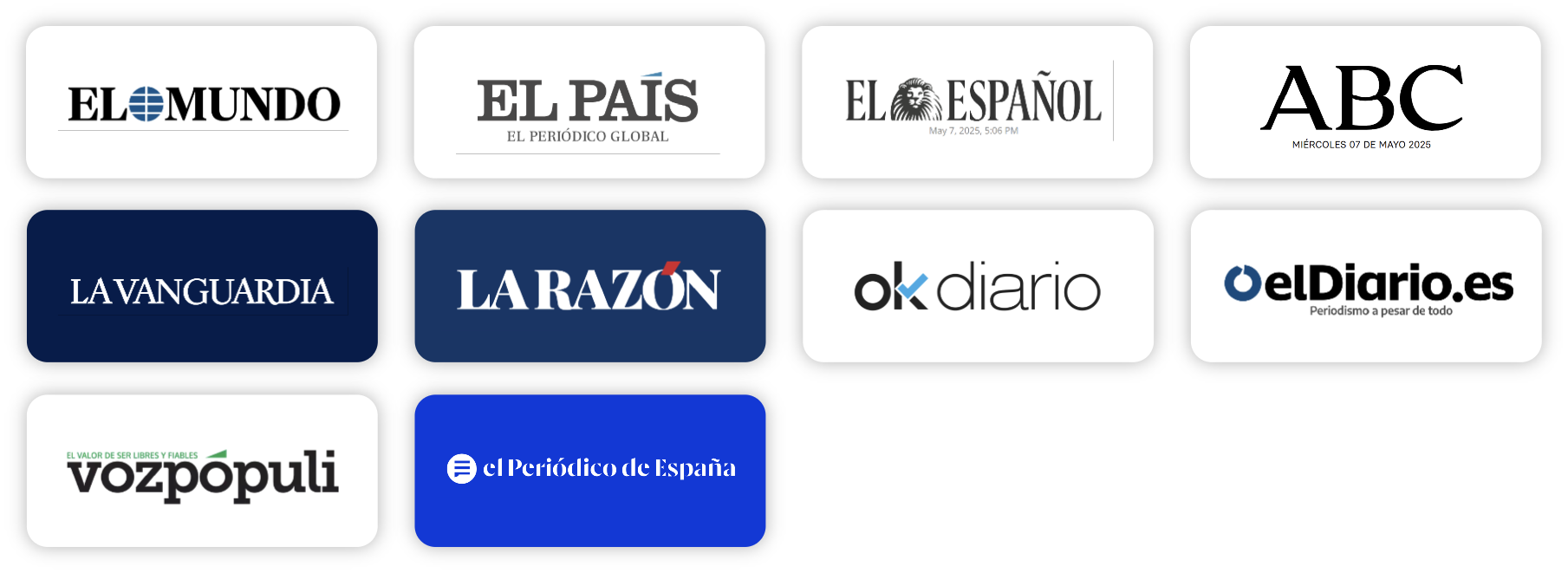
These outlets are highly influential and widely read, making them valuable for national coverage. However, securing placements in these publications can be competitive. They prioritise expert contributions, large-scale research, and data-driven stories with strong news value.
Regional publications:
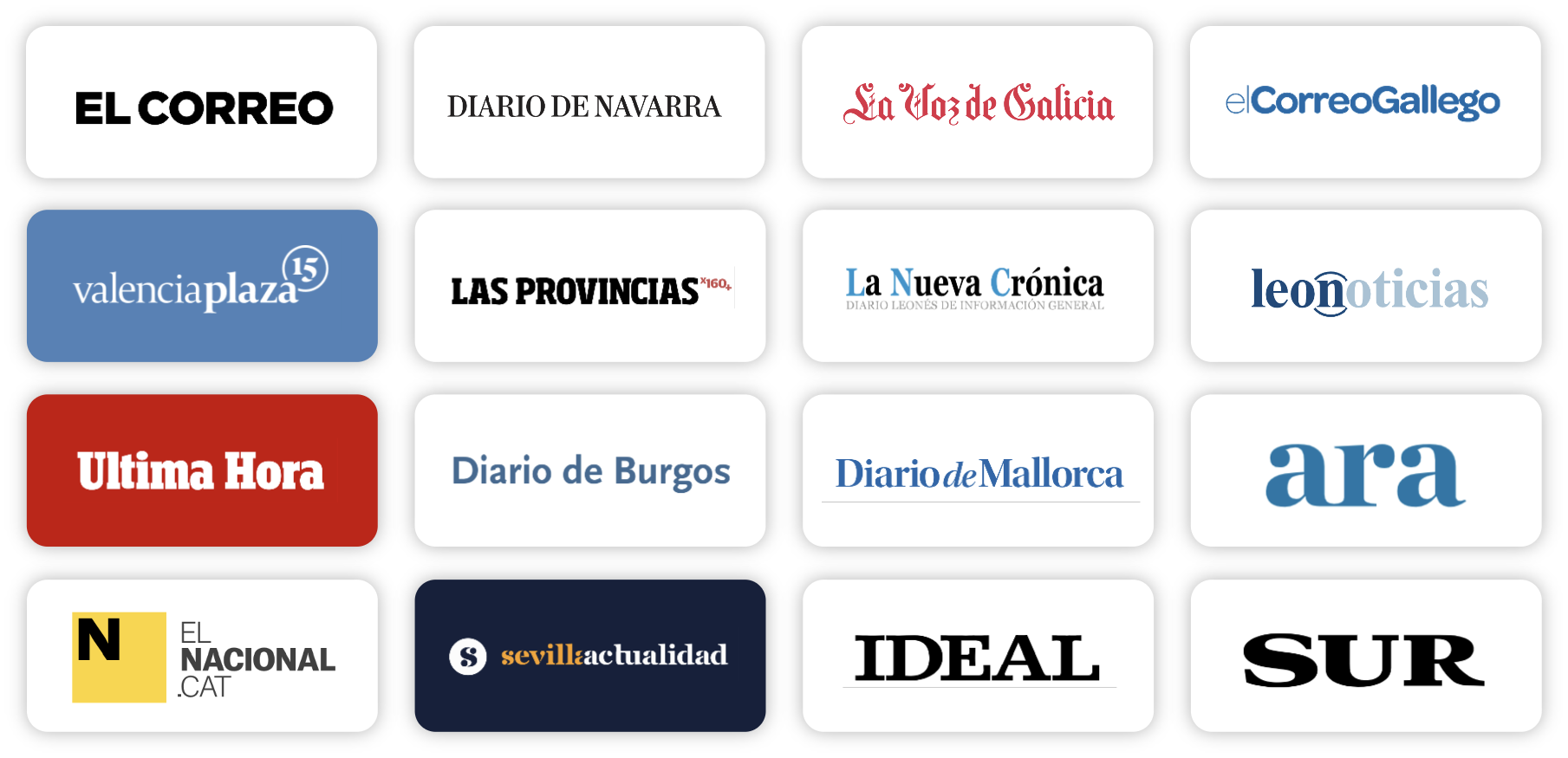
These outlets hold significant influence in their respective regions, making them valuable for locally targeted campaigns. When aiming for regional impact it is important to tailor content to reflect local interests, trends, and cultural relevance.
Niche publications:

For campaigns with a clear topical focus, niche publications can be highly effective. For example, sports-focused campaigns perform well in Marca, business insights gain traction in El Economista, and lifestyle or entertainment stories fit well in Revista Semana. Ensuring that content aligns with the audience’s interests is key to securing placements in these outlets.
If you want to find out about where to earn the best links in other countries, take a look at our French digital PR guide, or US digital PR guide.
3. What works in Spain: PR campaigns that drive links
Spanish journalists appreciate campaigns that align with their daily topics, meaning they must be interesting for a Spanish audience and stand out from other campaigns. This is typically achieved by creating campaigns where data is well-researched and valuable. To increase the likelihood of securing high-quality links in Spain, campaigns should align with culturally and contextually relevant topics.
Regional & city search data index studies
Nearly half of all links from culturally relevant Spanish campaigns come from high-authority domains (DR 75+)
Our data shows:
Campaigns focusing on Spanish lifestyle, cultural events, or social context tend to resonate well with both journalists and readers. Seasonal events, national traditions, and widely discussed cultural topics present strong opportunities.
Example campaign: The luckiest lottery numbers in Spain
We analysed the full list of winning numbers from Spain’s Christmas Lottery (El Gordo) since 1812 to uncover trends and insights. As Christmas approaches, lottery ticket exchanges between family and friends become a national tradition, making this a timely and widely appealing topic.
Results:
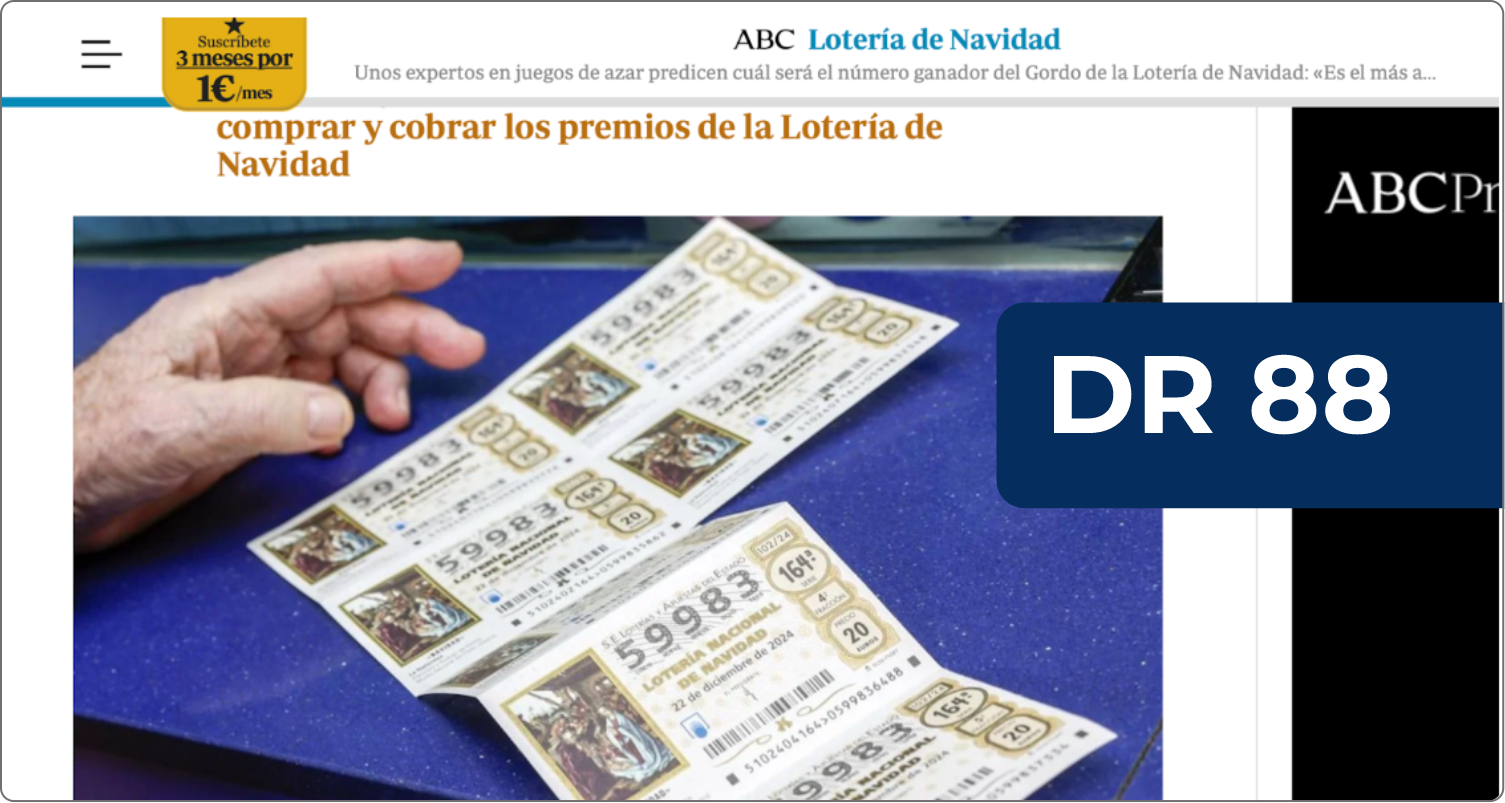
Data-driven campaigns
Data-driven campaigns generate 2.2x more Spanish links than non-data-driven ones
Our data shows:
Studies, reports, and research-backed content with authoritative data tend to perform well in Spanish media. Journalists value unique insights backed by credible sources, particularly when related to trending topics.
Example campaign: The most valuable preliminary Euro squads
The UEFA Euro Championship was a key event for European countries last summer, with Spain being no exception. Since this event was trending at the time, we created a campaign ranking the most valuable squads for EURO 2024 by analysing players' market values. To enhance local relevance, we highlighted Spain’s position in fourth place and tailored our outreach with a Spanish-focused angle.
Results:
Lifestyle content and expert comment
Lifestyle content accounts for nearly one-third of all links from Spanish-targeted campaigns
Our data shows:
Content related to health, food, music, home, and social habits performs well in Spanish media. Lighter campaigns have a place in Spanish outlets, particularly in their lifestyle sections, but they should be backed by expert commentary or reliable sources to ensure credibility.
Example campaign: The Dirtiest Places in the Bathroom and How Often They Should Be Cleaned
Using expert insights and hygiene studies, we identified the most bacteria-prone areas in a typical bathroom and recommended optimal cleaning frequencies.
Results:

Rankings based on country/regional data
Coverage of campaigns comparing countries or regions typically achieve an average DR of 70
Our data shows:
Rankings comparing European countries or Spanish regions/cities tend to attract attention, particularly when highlighting social, economic, or cultural trends. These types of campaigns generate engagement as they spark discussions and encourage regional pride.
Example campaign: Best European country for women to work
Created for International Women’s Day, this campaign ranked European countries based on workplace conditions for women, considering factors such as maternity leave and leadership opportunities.
Results:
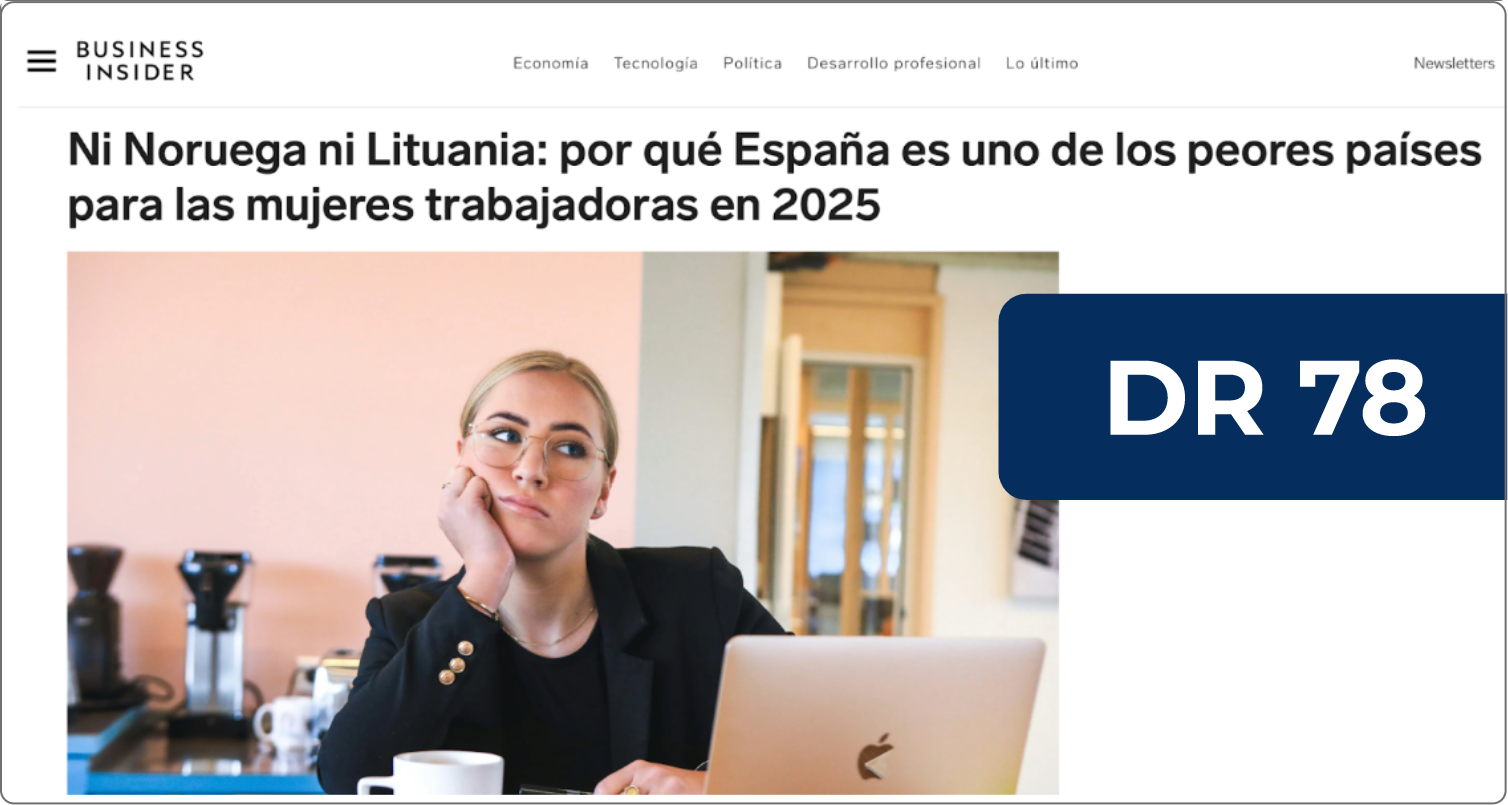
Sports campaigns
Over 60% of all Spanish publication links are driven by football and sports-related campaigns
Our data shows:
Football is deeply ingrained in Spanish culture. Creative campaigns linked to La Liga, major European tournaments, or national team statistics perform well. Regional rankings also increase engagement by playing on the competitive nature of Spain’s regions.
Example campaign: The Luckiest Regions to Become a Football Player in Spain
This campaign analysed which Spanish regions (Comunidades Autónomas) produced the most professional and valuable footballers.
Results:
4. Outreach in Spain: What works with Spanish journalists
Successfully engaging Spanish journalists requires a balance of professionalism, cultural awareness, and strategic timing. Here are key considerations for maximising outreach success:
Use a friendly yet professional tone. Addressing Spanish journalists by their first name helps build rapport
Prioritise mornings, when open and response rates are at their peak
Ensure content is backed by credible data and clearly presented insights to enhance its newsworthiness
Personalise your pitches. Tailor your pitch to the journalist’s interests and show you’ve done your research
Limit follow-ups. One follow-up is generally acceptable; persistent emails can be seen as intrusive
Be mindful of cultural sensitivities. Consider local values and cultural nuances to build strong relationships
Time your outreach. Avoid major holidays and summer breaks, when response rates drop significantly
Top 3 outreach mistakes in Spain
A Spanish reporter from a well-known news agency shares the key mistakes that frustrate journalists the most:
 Negative framing:
Negative framing:
“In Spain, a positive approach works best. Instead of focusing on the negatives, highlight the positives. For example, instead of pitching a piece about tourist destinations to avoid, emphasise the places that are guaranteed to impress and exceed expectations”
 Uninspiring subject lines:
Uninspiring subject lines:
“The subject line is crucial! It’s often the deciding factor in whether your pitch gets opened. Make sure it’s compelling and grabs attention. Weak or generic subject lines can easily be ignored”
 Lack of high-resolution images:
Lack of high-resolution images:
“For feature articles and reports, high-quality, relevant images are a must. Journalists expect visuals that are closely aligned with the content being pitched”
5. Why AI translation fails for Spanish Digital PR
While AI-powered translation tools have improved significantly, they often miss linguistic nuances and cultural context, making them unreliable for PR outreach in Spain. Misinterpretations can affect tone, clarity, and credibility, reducing the chances of media pickup.
Key issues with AI translation in Spanish Digital PR:
 Incorrect tone and formality
Incorrect tone and formality
Automated translations often misjudge tone, making content either overly formal or too casual. Journalists expect a natural, professional, and engaging tone that aligns with their style.
 Cultural dissonance
Cultural dissonance
Many expressions in English do not translate literally into Spanish. AI often provides a word-for-word translation that loses meaning or sounds unnatural.
Example: “Think outside the box”
- “Piensa fuera de la caja” – Google Translate (Literal but unnatural, this phrase doesn’t exist in Spanish and can be confusing)
- “Piensa con originalidad” – DeepL Translate (Technically correct, but could be improved -
- "Sé original" would feel more natural) “Sé creativo” / “Rompe los esquemas” (Fluent and natural alternatives used in Spanish)
 Regional variations in Spanish
Regional variations in Spanish
Spanish differs greatly between Spain and Latin America. AI translations often default to one variant, leading to unnatural phrasing in the target country. For instance:
Example: “Think outside the box”
- Spain: “Ordenador” (computer) | Latin America:
- “Computadora” Spain: “Coche” (car) | Latin America: “Auto”
 Level of politeness: Tú vs. Usted
Level of politeness: Tú vs. Usted
Spanish has different levels of formality, which AI often gets wrong. The choice between “tú” (informal, second-person singular)and “usted” (formal, third-person singular) depends on the journalist's age, status, and country:
- Spain: Most journalists prefer tú (casual), except for senior editors or higher-level executives who may expect usted.
- Latin America: Generally leans towards usted for professional communication, making informal AI-generated outreach sound unprofessional.
For example, if AI defaults to the “usted” (third-person) form, it may seem too formal or outdated in Spain but is generally preferred in Latin America. On the other hand, using the “tú” (second-person) form might feel too informal and unnatural in Latin America. Context matters!
Examples of AI translation failure: Real-world vs. AI-generated headlines
Poorly translated headlines can lose impact or even change meaning entirely.
Example: “How dirty can Brits be? Research has revealed that 845,000 Brits have NEVER washed their bath mat”
-
AI Translation
“¿Qué tan sucios pueden ser los británicos? Una investigación ha revelado que 845,000 británicos NUNCA han lavado su alfombrilla de baño.”
-
DeepL Translation
“¿Cómo de sucios pueden ser los británicos? Una investigación ha revelado que 845.000 británicos no han lavado NUNCA su alfombrilla de baño”
-
Human Translation
“¿Cómo de sucios son los británicos? Un estudio revela que 845.000 británicos no han lavado NUNCA su alfombra de baño”
Why?
- “¿Cómo de sucios son” sounds natural in Spain, while “¿Qué tan sucios son” fits better in Latin America. Even though "can" sounds natural in English, it doesn’t in Spanish. DeepL’s translation "¿Cómo de sucios pueden ser?" feels unnatural because "pueden" (can) isn’t typically used in this type of sentence in Spanish.
- “Un estudio revela” ("A study reveals") is clearer and more readable than “Una investigación ha revelado” ("An investigation has revealed"), which feels too academic and makes the headline longer.
- “Alfombra de baño” ( “bath mat”) is more widely understood, while “alfombrilla de baño” is less commonly used. AI and other translation tools often lack this cultural linguistic awareness.
- “No han lavado NUNCA” places “NUNCA” naturally for emphasis, unlike the AI version. In Spanish, placing "NUNCA" (never) at the end makes the sentence sound stronger and more natural. AI translations often miss this, making the sentence sound less impactful.
Ensure your Spanish PR campaigns are tailored to the local audience, sounding natural, authentic, and appealing to Spanish media
6. The secret to Spanish Digital PR: Why you need native expertise
Successfully executing Digital PR in Spain requires more than just translation - it demands a deep understanding of regional differences, linguistic nuances, and audience preferences.
 Regional relevance: One size doesn’t fit all
Regional relevance: One size doesn’t fit all
What works in one part of Spain may not resonate elsewhere. Spain has distinct cultural and regional identities that shape media interests.
Example:
Topics related to flamenco (music, dance, culture) may attract attention in Andalusia but would hold little relevance in the Basque Country or Catalonia.
In our “Luckiest Regions to Become a Football Player in Spain” campaign, we tailored both the data and outreach for each region, ensuring that local media received insights that resonated with their audience. This regional approach significantly increased pick-up rates.
 Tone and language
Tone and language
A native level understanding of Spanish ensures that PR content feels authentic, natural, and engaging.
- AI or non-native translations often miss idioms, expressions and formalities, leading to awkward or unnatural phrasing.
- Adjusting language and phrasing based on local norms enhances credibility and journalist interest.
 Data relevance: Knowing what drives engagement
Data relevance: Knowing what drives engagement
- Spanish journalists prefer well-researched, data-driven stories, but the type of data that resonates varies.
- Understanding local trends, media priorities, and timely cultural topics ensures higher engagement and link-building success.
7. The SEO & business impact of securing Spanish links
Link building has traditionally centred on authority, but today’s most effective SEOs recognise that relevance is just as crucial, particularly in region-specific markets such as Spain.
A key factor in link relevance is geographical alignment, where the linking domain is based and operates. While a natural link profile should include a diverse mix of sources from across the globe, and while links from highly authoritative international websites remain valuable, backlinks from trusted Spanish publications provide distinct strategic benefits.
Not only do these links boost local relevance and authority signals, but they also enhance the chances of driving referral traffic and conversions. In Spain’s unique and often regionally fragmented media landscape, this can significantly improve brand visibility and audience engagement in key local markets.
Here’s what our Search Director, Oliver Sissons, says about the performance of digital PR campaigns in Spain:
“Wherever your business operates, it is more likely than not that earning links from authority domestic publications will drive growth for your brand. However, you need to be mindful of regional differences within the media to ensure that your link-building campaigns can have the best results possible.”
OLIVER SISSONS
8. Why choose Reboot for Spanish Digital PR
At Reboot, we specialise in crafting tailored digital PR strategies that resonate with the targeted market, securing high-quality media coverage and valuable backlinks. Our campaigns in Spain have delivered exceptional results, such as:
- Over 420 backlinks acquired since our first Spanish-speaking link, with an average DR of 74
- Over three-quarters (80%) of our Spanish-speaking links have been DR70+ in recent years
- Over a third (34.5%) of our Spanish-speaking links have been DR80+ in recent years
Find out more about success in the Spanish market through these high-authority links from leading Spanish media outlets:
These results highlight the potential of well-executed digital PR in Spain, demonstrating how trending, data-driven campaigns can earn top-tier media coverage and foster meaningful audience engagement. By understanding the Spanish media landscape, Reboot helps brands enhance their visibility, build authority and boost organic growth.

